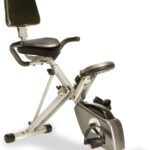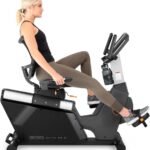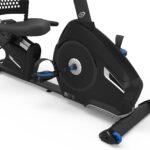If you are a fitness enthusiast and like to keep track of your workout, you probably know how important it is to monitor your heart rate. Working out without a heart monitor is like working on a word document for hours and closing it without saving. Tracking your heart rate using a heart rate monitor helps you keep a record of your workout performance and helps keep a check on heart health. This article will guide you on connecting a heart rate monitor to Peloton. Since you have a Peloton bike and a compatible heart rate monitor, you are already halfway there and just a few steps away from getting the best out of your heart rate monitor.
What is a Heart Rate Monitor?
A heart rate monitor is a device that “measures and displays the heart rate” while wearing it. It comes with built-in electrode sensors that record every heartbeat and then send the recorded data to the device’s display screen, be it a watch, an app, or a chest strap.
These might not be 100% accurate, but the heart rate monitor provides continuous data compared to a pulse rate monitor that provides a one-time value only. Thus you can enjoy a seamless workout and do not need to stop and monitor your heart rate.
Heart rate monitors have come a long way. You can now add a heart rate goal, and the heart rate monitor will give you alerts (both audio and visual) during the workout whether your heart is above or below your desired rate. The heart rate, but the monitor also shows other determinants of workout like time, elevation, and speed.
How to Connect Heart Rate Monitor to Peloton?
Since you have got your hands on the Peloton Heart Rate monitor, you are an easy assembly away from getting started on it. Here is a simplified guide on how to connect a heart rate monitor to Peloton:
Step #1: Unboxing
Does unboxing excite you? Even if it does ‘t don’t, this one will spike up your curiosity. As you open teh box, you will see your heart rate monitor gleaming in all its glory on top of a strap. The sides are sensitive to touch, and the lights on both sides will toggle on when you take them out.
Blue light indicates that the device is ready to pair with Bluetooth.
Red light indicates that the device is ready to detect your heartbeat.
Your Peloton Heart rate monitor is now ready to roll.
Step #2: Wearing
It’s now time to hop on the Peloton bike and start recording your progress. You can wear the heart rate monitor in three ways:
- Over your chest, using a chest strap
- On your upper arm, use an armband
- On your wrist, using an armband
Out of all three, the heart rate monitor gives the most accurate reading when worn over the upper arm.
Step #3: Connecting with Bluetooth
The next step is connecting your device to Bluetooth with the Peloton bike. Make sure the Bluetooth is turned on both devices. It might take some time to connect the first time. Just wait for a few seconds and wait for it.
Pro Tip: For better Bluetooth connectivity, moisten the monitor’s electrodes. You can do so easily by simply putting water on them with your wet fingers.
Step #4: Connecting the Heart Rate Monitor
Once it is connected, you need to set up the device. On the right side of the screen, you will see the option of time. You will see different options, including the heart rate monitor. Recognize your heart rate monitor with the heart sign and its name, and then tap on it.
Toggle it to connect, and you are done.
Step #5: Peloton Class
Now that everything is set up, you can join the Peloton class. As you pedal on, you will see your heart rate in numbers on the left side of the Peloton bike screen.
Step #6: Disconnect the Monitor
When you are done, disconnect the monitor. This is important because if not turned off, it will keep monitoring the heart rate, leading to faster battery drainage.
Read: Costco Exercise Bike vs Peloton
What are the Benefits of using a Heart Rate Monitor?
Monitoring your heart rate is a great way to check your heart health and the right way to track your progress. Your workout intensity and fitness levels can only be measured by keeping a record of your heart rate. Here are the top benefits of wearing a heart rate monitor:
Constant & Accurate Monitoring of Heart Rate: A heart rate monitor provides consistent data on your heartbeat while exercising. This way, you get to achieve your heart rate goals and also keep a check on how your heart is doing. You cannot just always determine from heavy breathing and sweating. You must have accurate numbers, which is only possible with a heart rate monitor. With constant and accurate monitoring, you can burn calories efficiently and mindfully.
Recovery Heart Rate:
your recovery heart rate is an excellent indication of your aerobic fitness. You can keep track of it by looking at the recovery heart rate. This can be quickly done using a heart rate monitor.
Adjusting the Workout:
If you have a heart rate monitor, you can easily adjust your workout regime. You will know which workouts have a lower effect on your heart rate and which exercises can elevate your heart rate. Thus you can save yourself from both over-exercising and low-intensity workouts.
Read: Regular shoes on a Peloton bike?
What is the difference between a Chest Strap and a Wristband Heart Rate Monitor?
The primary difference between the two is simple. A chest strap is worn on the chest pressed to the skin, whereas a wristband heart rate monitor is worn on the wrist in a watch or a wristband. However, there is a slight difference in the functioning of both, which directly affects the accuracy of the results.
The chest strap measures the heartbeat’s electrical activity, whereas a wristband measures the result of the heartbeat, that is, dilation of blood vessels. The chest strap is more accurate for an apparent reason.,




